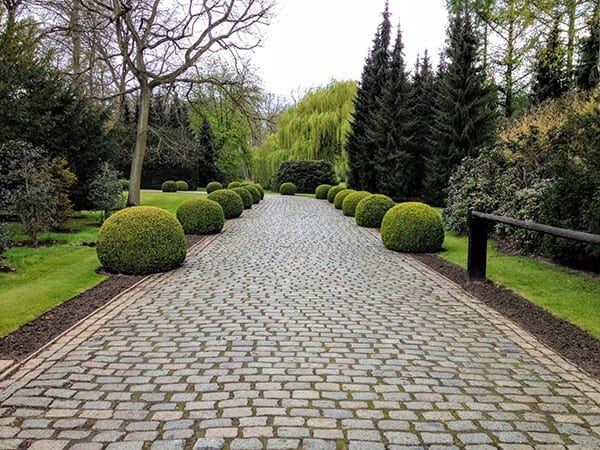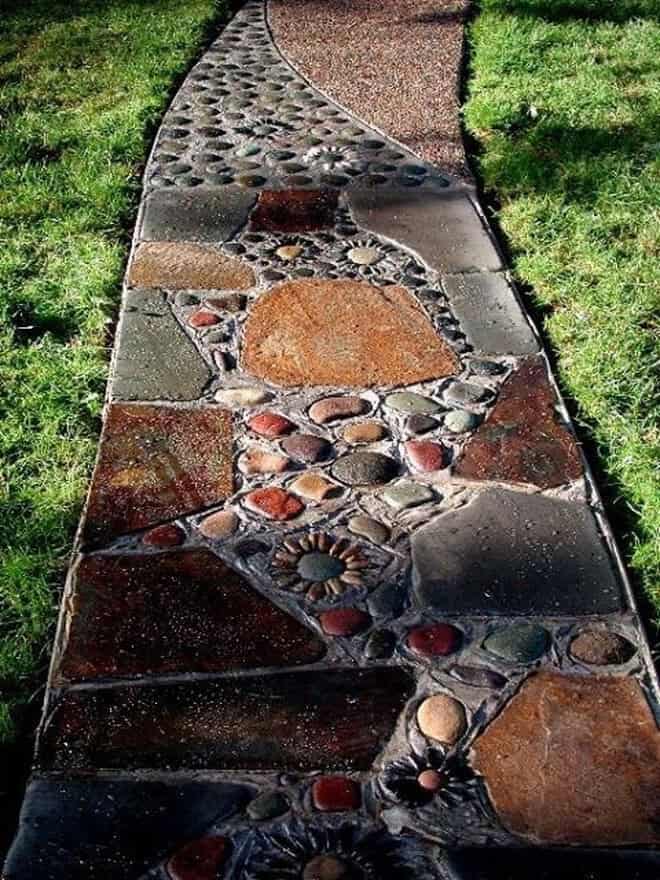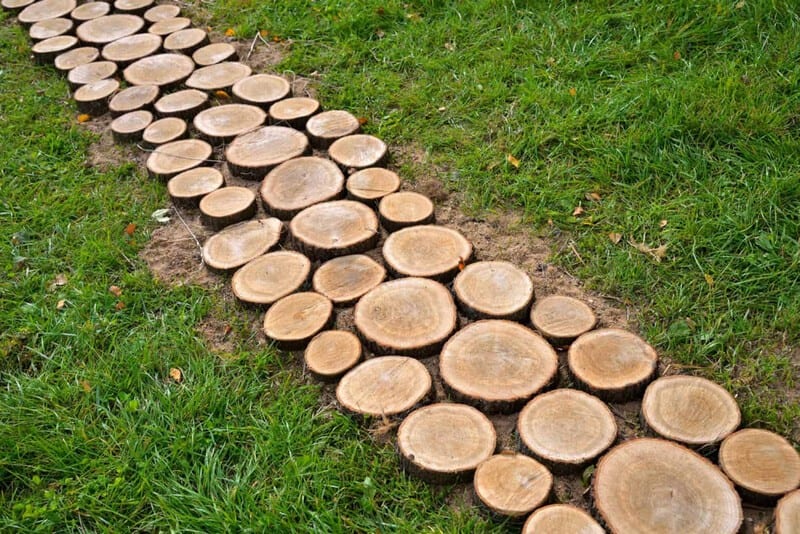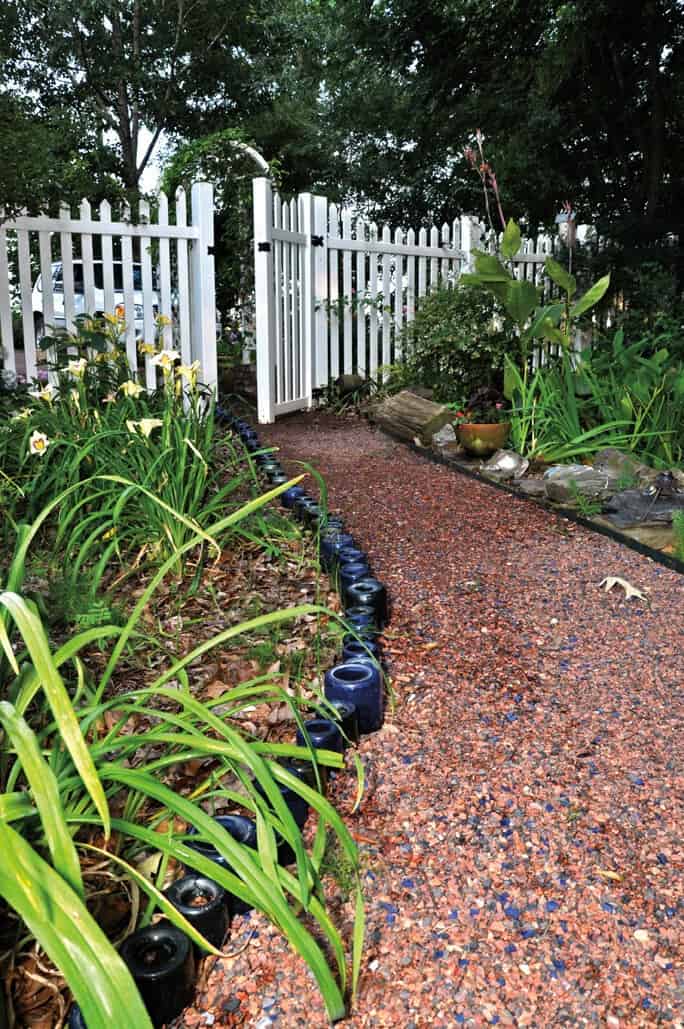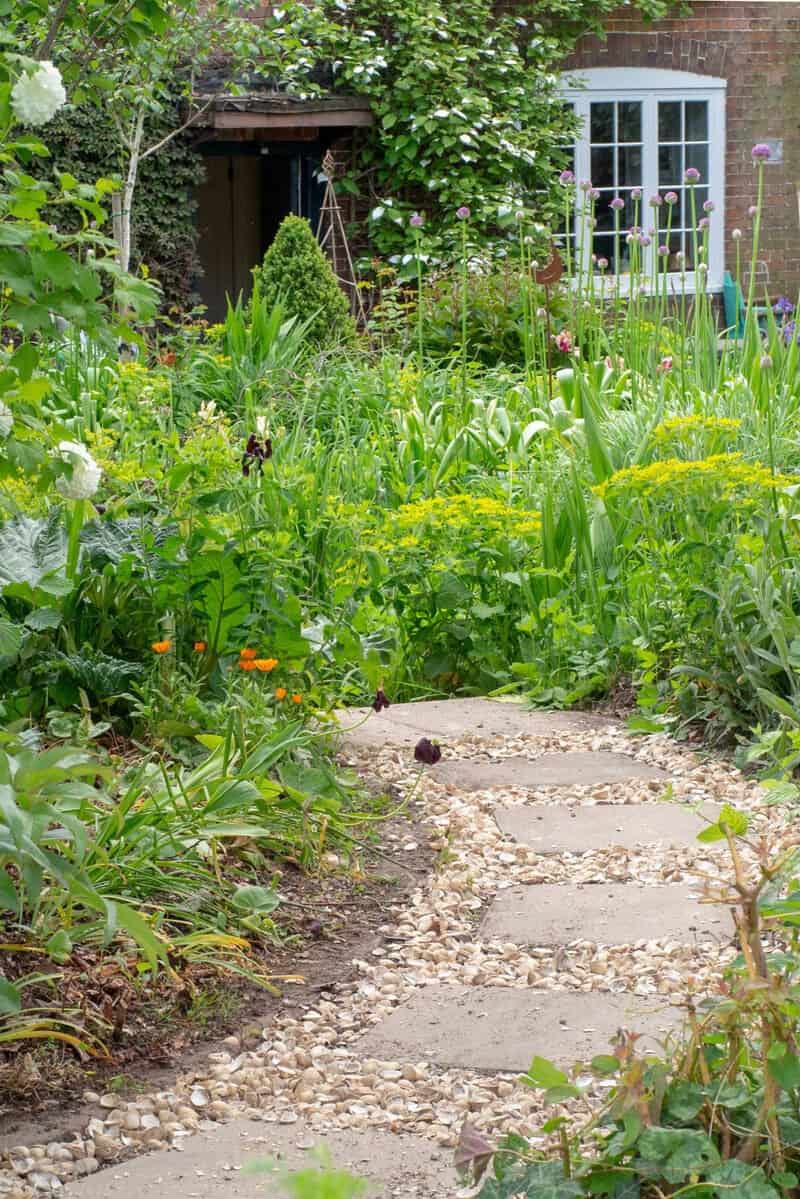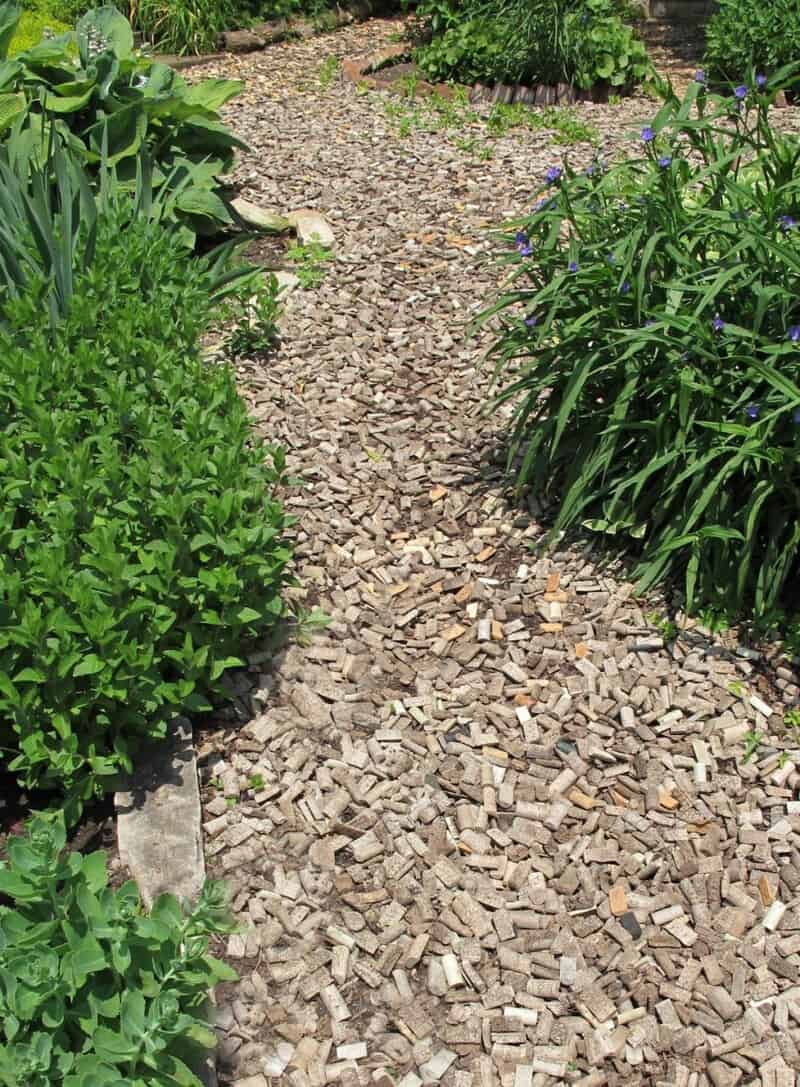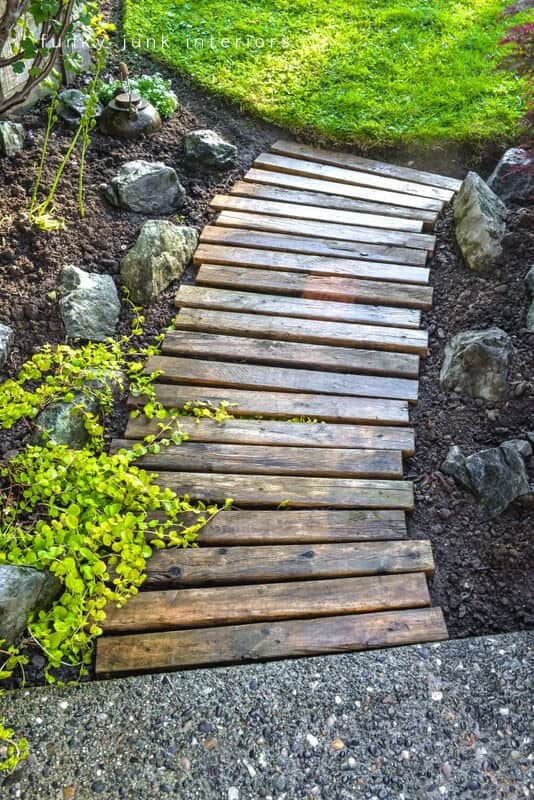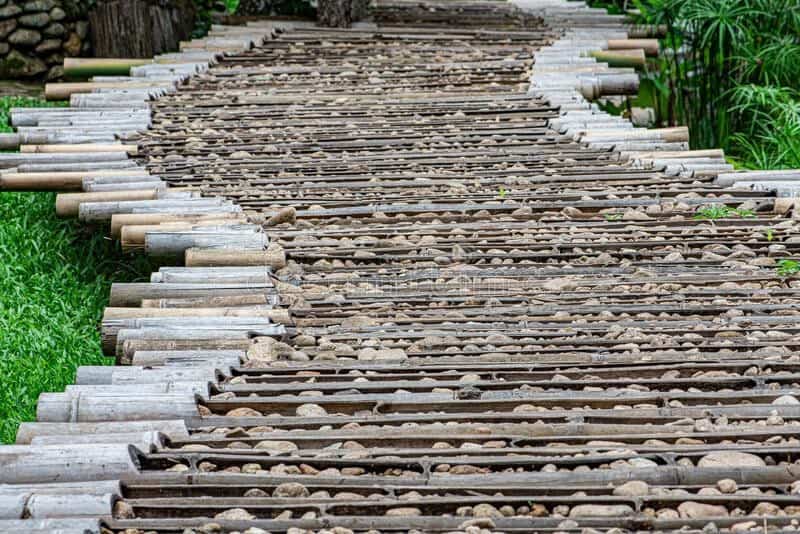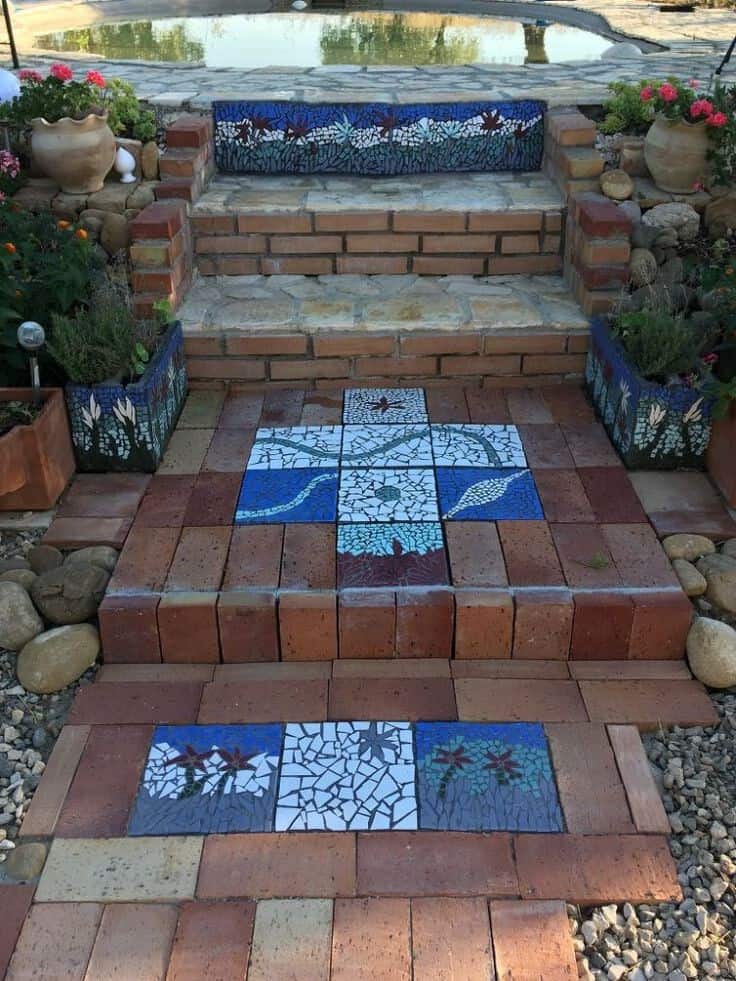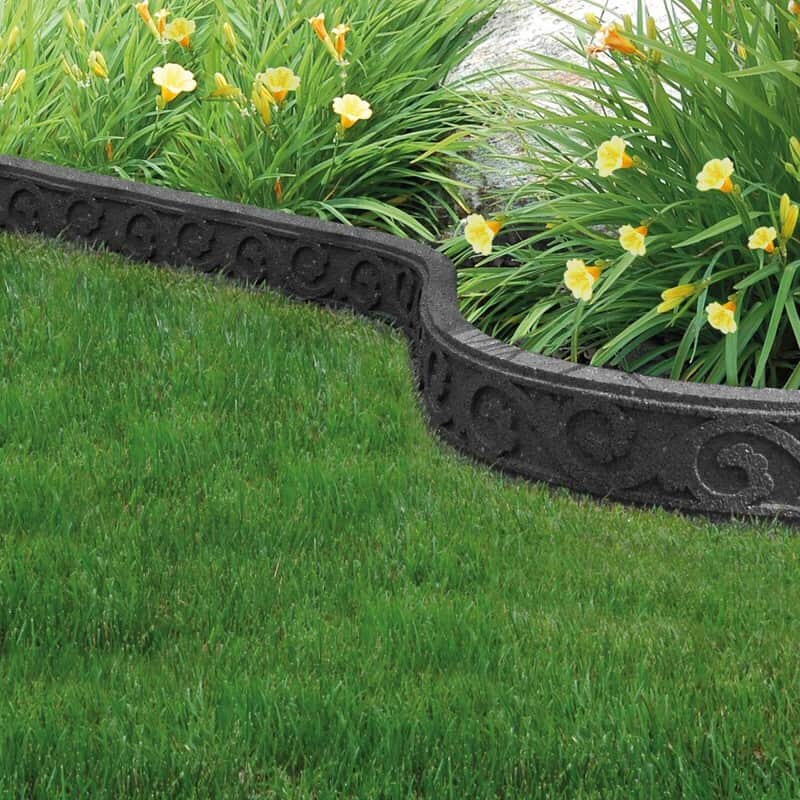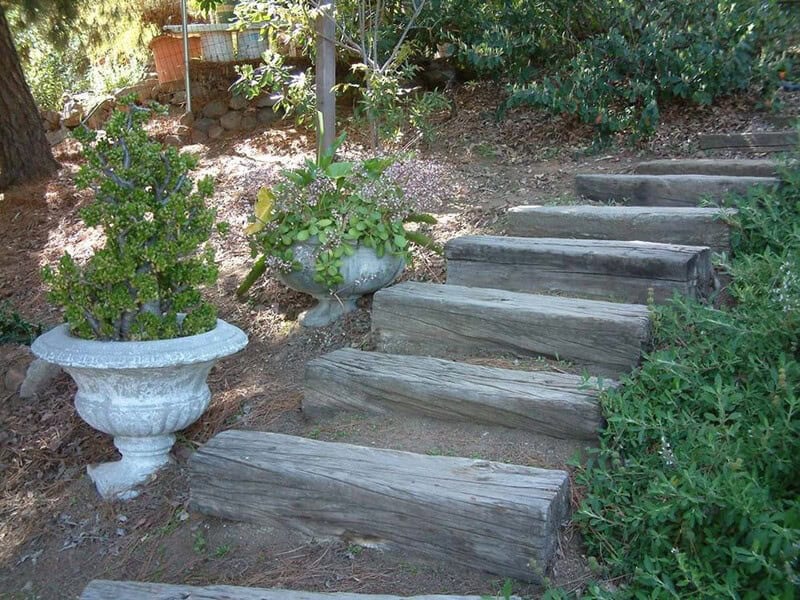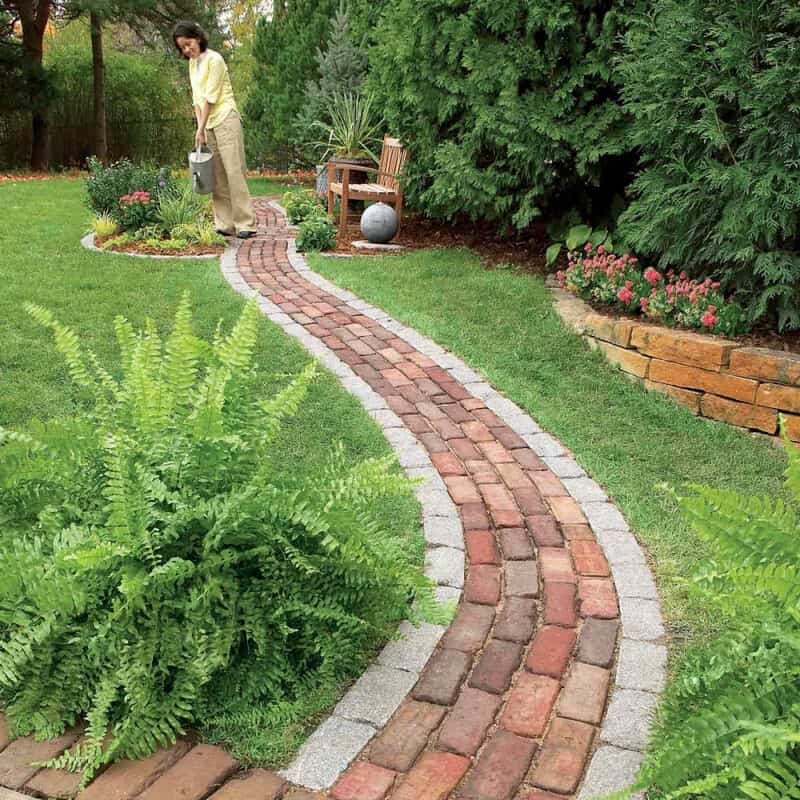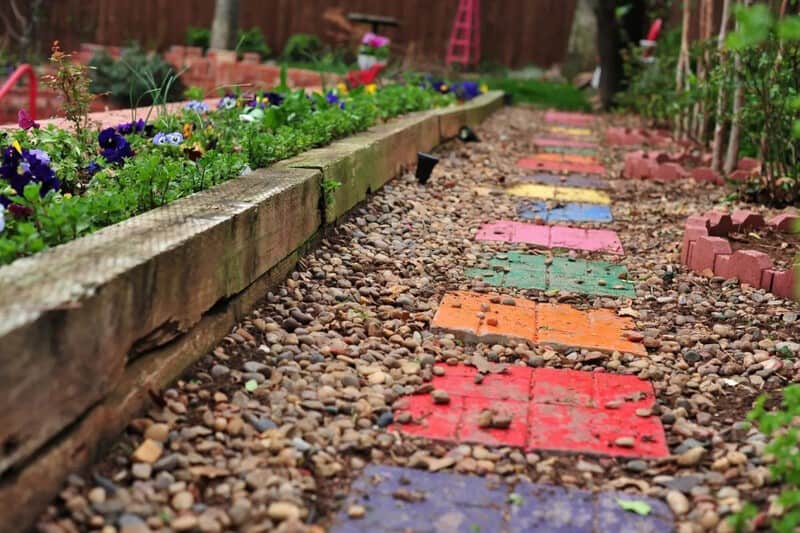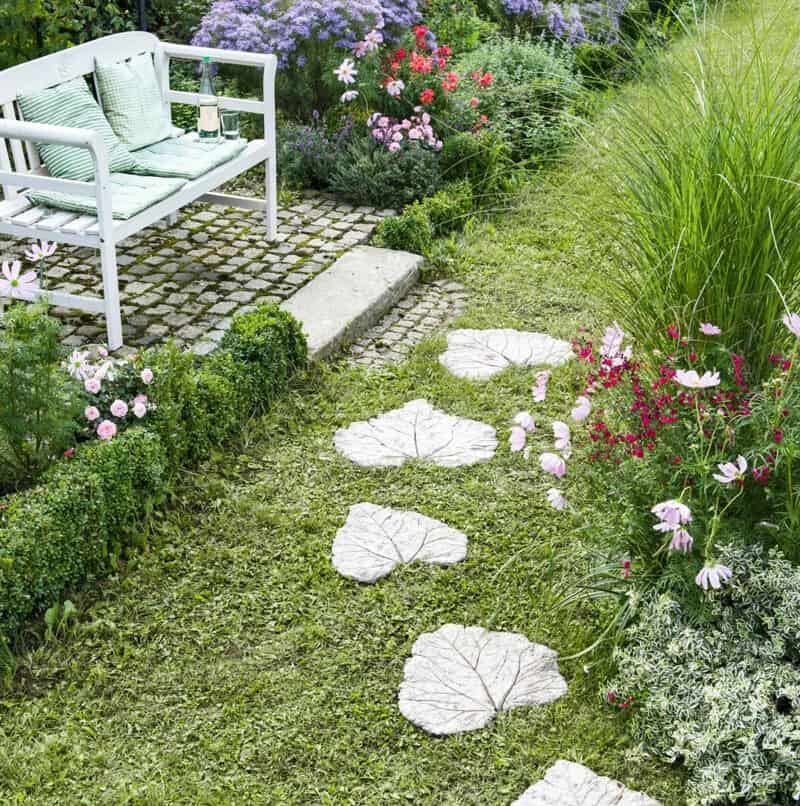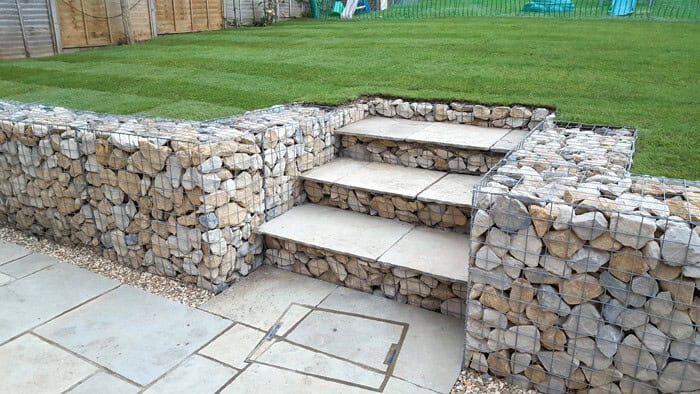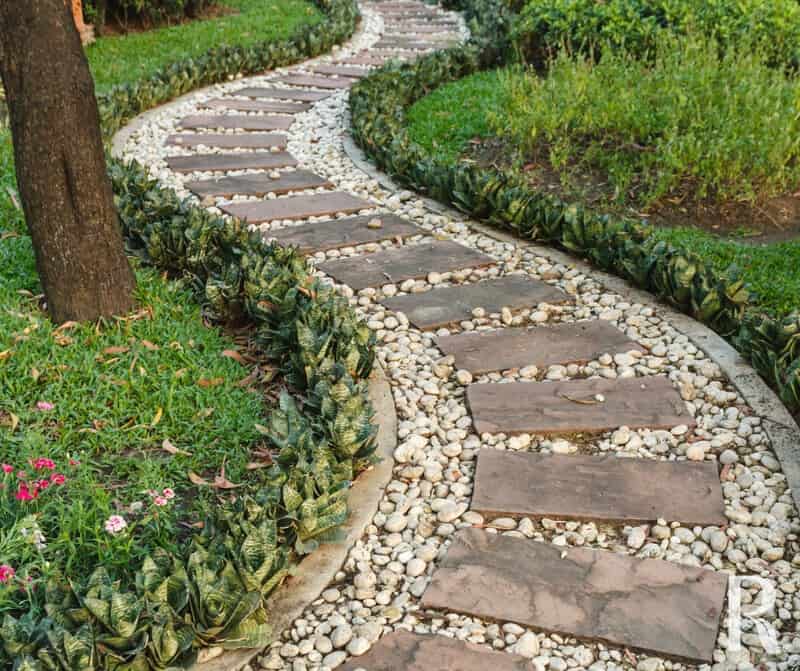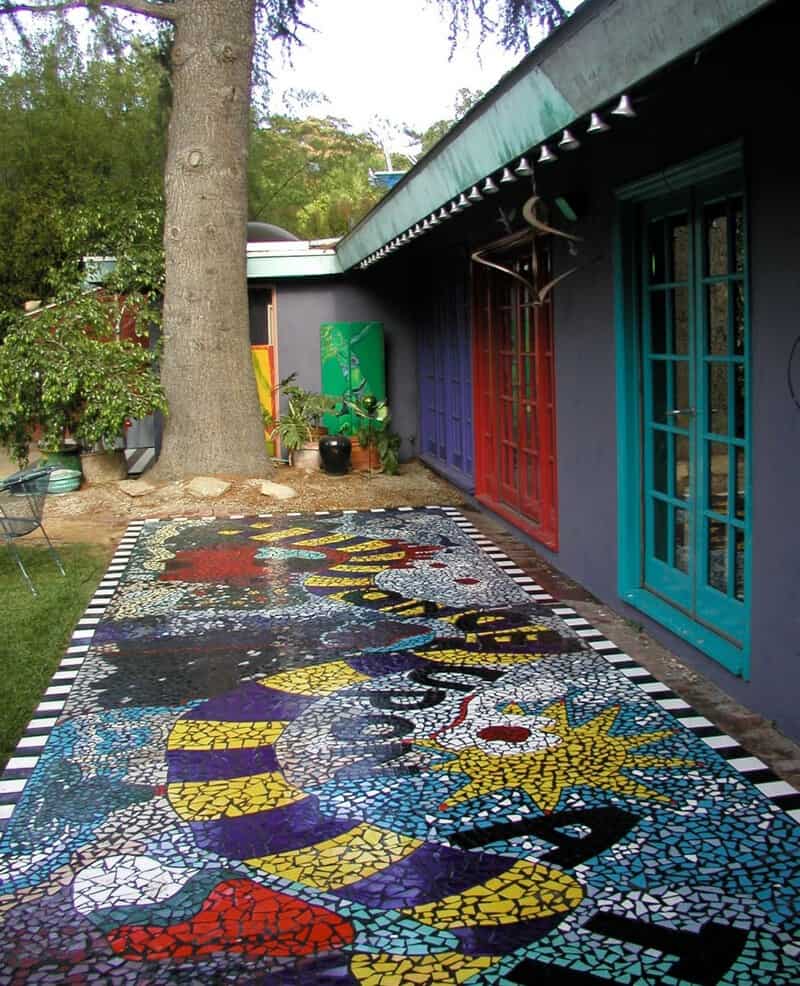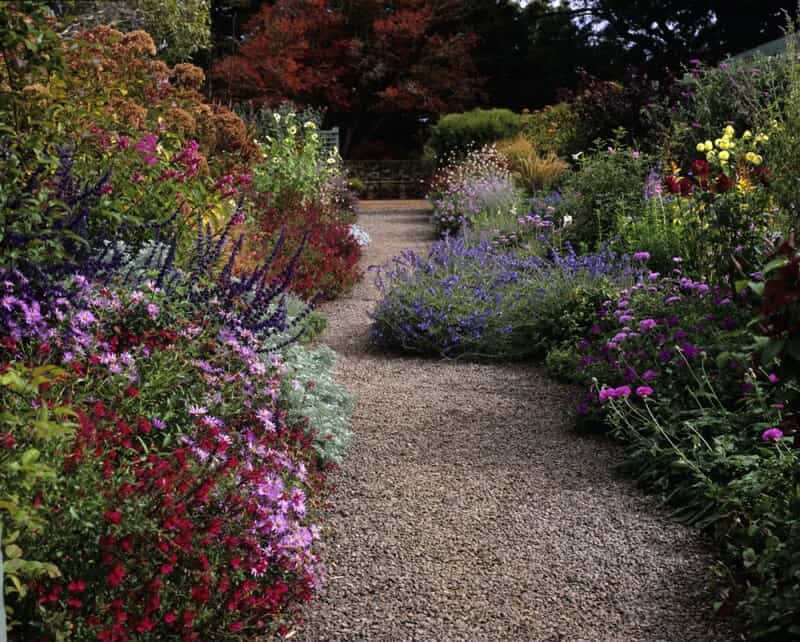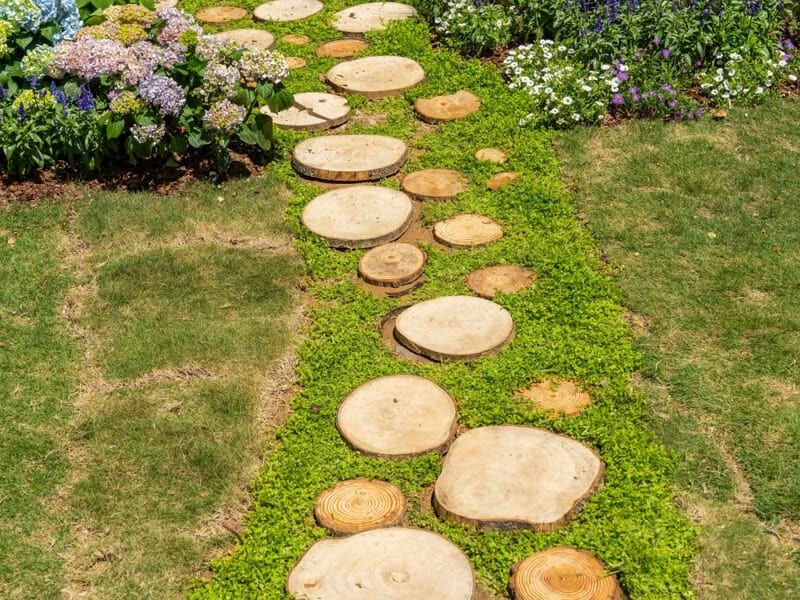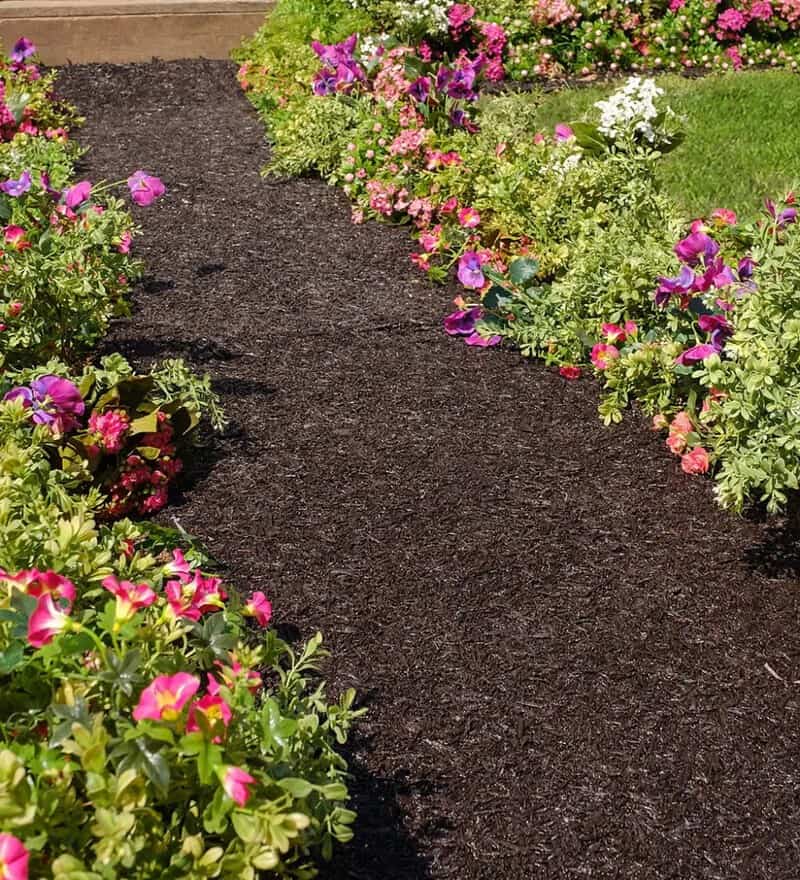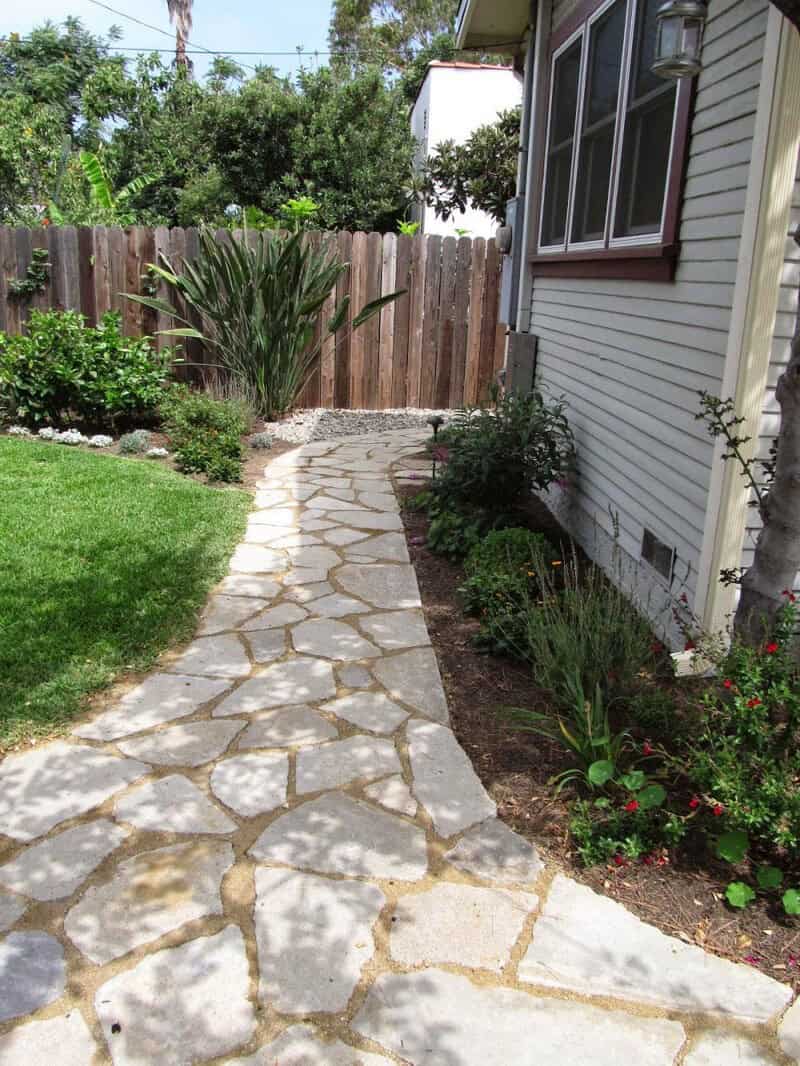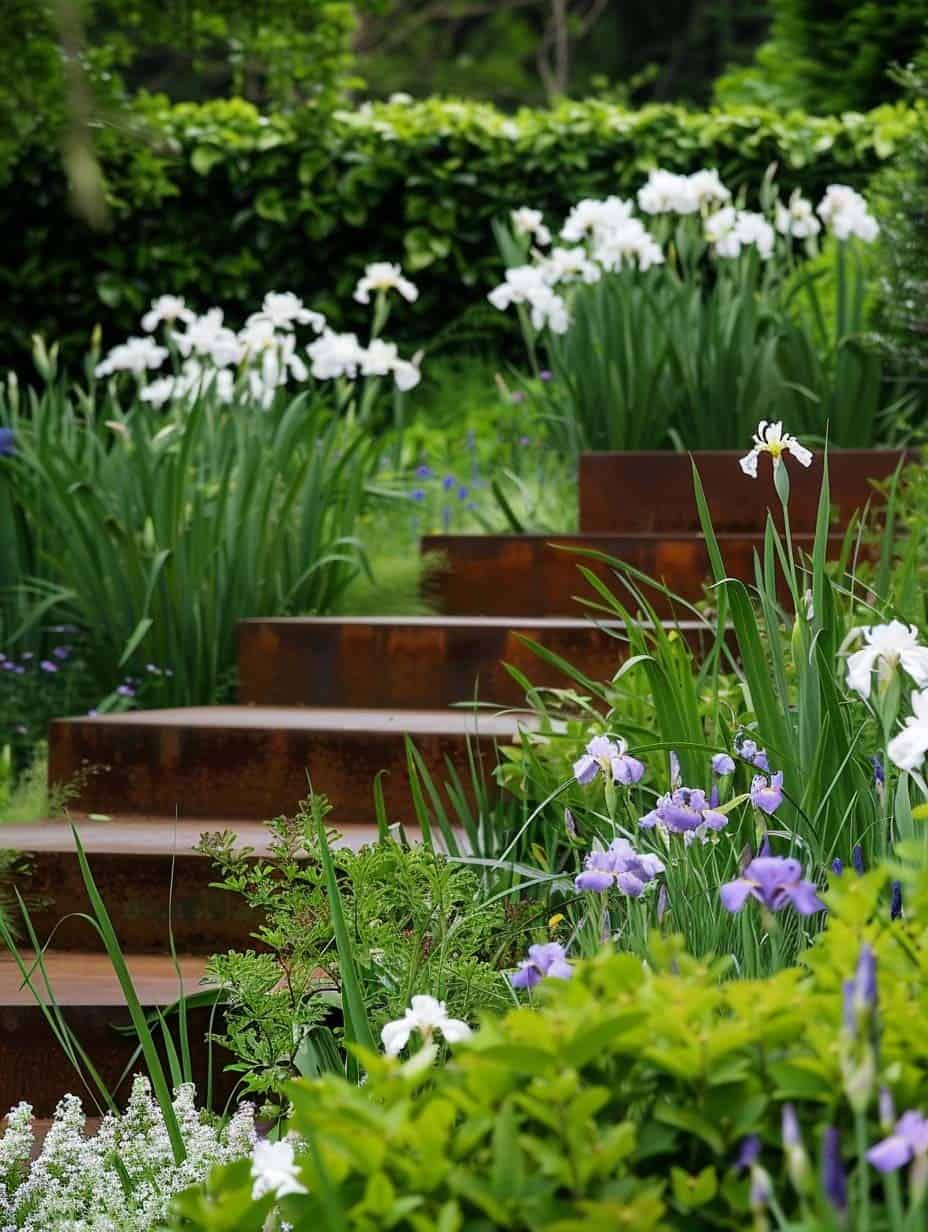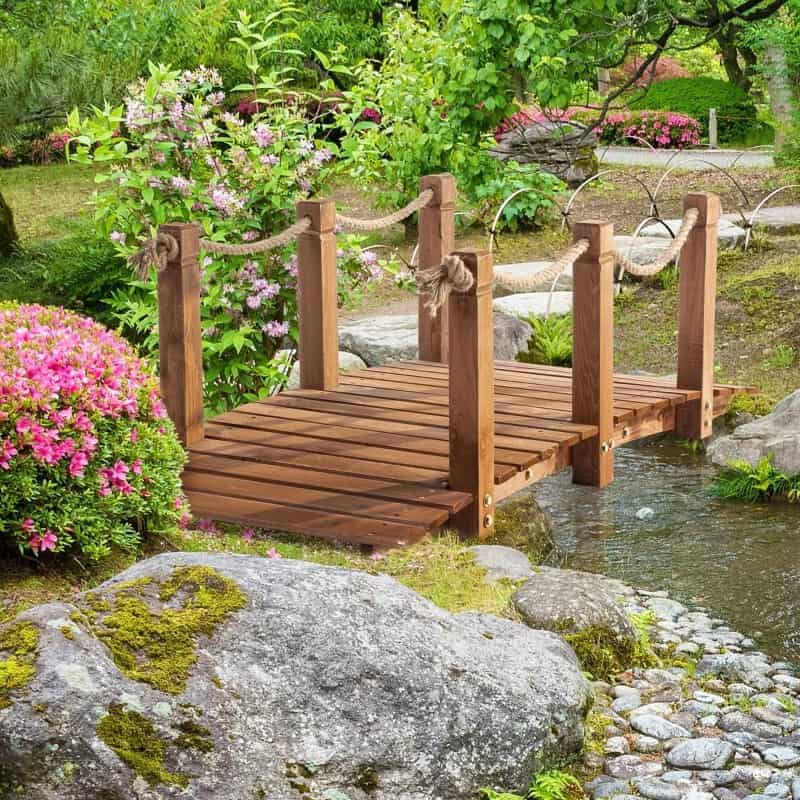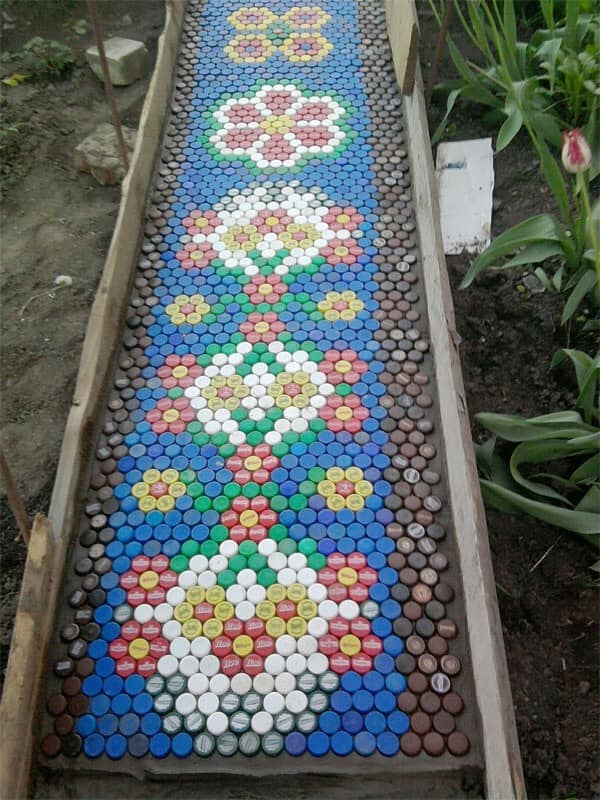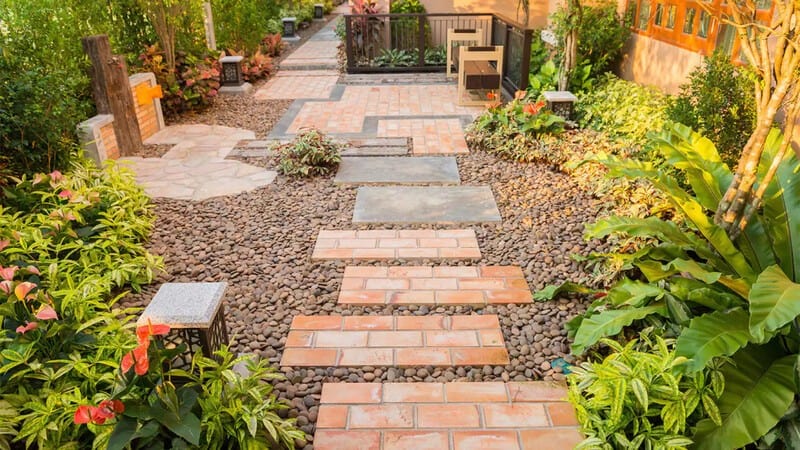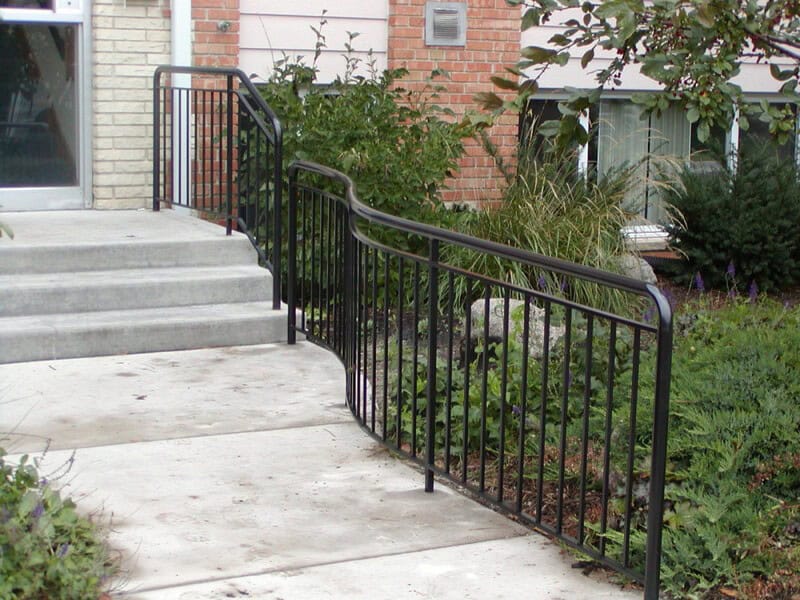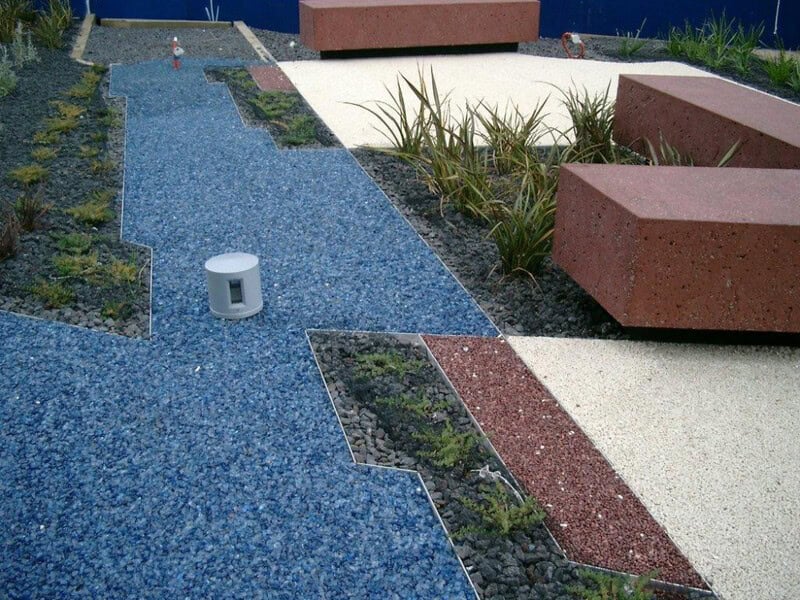Defining outdoor spaces with ease and elegance, garden paths play a crucial role in creating an inviting atmosphere. By separating areas and providing a clean and convenient passage through the garden, these features serve as a beautiful and functional addition to any outdoor setting. When it comes to designing a garden path, materials are limitless, ranging from natural elements like stone and wood to recycled materials that offer a unique touch.
For inspiration, explore our comprehensive collection of 27 Garden Path Ideas Embracing Natural and Recycled Materials to take your backyard upgrade project to the next level.
Mixed Stones Path
Nature’s bounty is evident in the abundance of stones scattered throughout various landscapes. Riverbanks, coastlines, and woodlands all yield an assortment of stone varieties, just waiting to be collected and crafted into a one-of-a-kind mosaic. The process begins by gathering an array of sizes and hues, after which concrete serves as both a bonding agent and foundation for the walkway, expertly securing each stone in place.
Logs Walkway
The versatility of the garden path concept allows it to be implemented using both wooden slices and logs. To create a log-based pathway, however, some groundwork is necessary. This involves digging holes that will serve as receptacles for the logs, ensuring they are securely anchored in place.
Bottles and Gravel Path
Transform your gathered wine bottles into a unique walkway edging by burying them with their necks submerged into the ground. To complete this creative upcycle, fill the space between the bottles with a vibrant mix of colored gravel. The end result will be an eye-catching and environmentally friendly design that adds character to your outdoor space.
Concrete Stepping Stones And Sea Shells Path
Envisioning a serene and inviting atmosphere, this charming garden path concept features stepping stones made of concrete, carefully arranged across the terrain. The spaces between these natural-looking pathways and the surrounding garden edge are thoughtfully filled with an abundance of seashells, adding a touch of whimsy and visual interest to the overall design.
Wood Chip Garden Path
To maintain a charming, rustic atmosphere on your pathway, consider using wooden chips as the surface material. Before laying them down, ensure the ground is level to within an inch or so. Then, simply spread the wood chips evenly over the prepared surface.
Reclaimed Wooden Slats Walkway
To bring your garden path to life, you’ll need a few slats left over from another DIY project. You can trim each one to an identical length or mix and match them to create a visually appealing pattern. Before laying down the slats, make sure the ground is properly prepared by excavating some of the soil where they’ll sit. This will ensure a solid foundation for your new garden path.
Stone and Bamboo Walkway
The natural pathway’s foundation is built on a clever combination of materials and design. Rather than placing bamboo sticks directly on the ground – where they’d be susceptible to rot – they’re supported by a carefully crafted structure that creates a curved pattern. This unique setup allows for optimal drainage, as rainwater can easily flow through the space between the bamboo and its foundation.
The interior of each stick is also filled with river stones, providing additional stability and ensuring the pathway remains sturdy and secure.
Broken Tiles Idea For A Pathway
The stair walkway seamlessly blends functionality with creative flair, showcasing a unique combination of materials. At its foundation lies a sturdy base of brick and stone, providing a solid structure for the visually appealing design to shine. Eye-catching tile mosaics adorn the walls, featuring vibrant tropical patterns that beautifully complement the surrounding flower pots, creating a harmonious visual balance.
Molded Edge For a Beautiful Path
The concept involves utilizing a molded concrete edge to define the pathway. This approach offers an impressive range of options for selecting the desired mold shape, allowing homeowners to personalize their walkway design.
Path From Sleepers
When it comes to DIY garden projects, rail sleepers are an excellent choice due to their exceptional sturdiness and durability. One creative way to incorporate them is by cutting them into identical pieces and arranging them in a stair-step pattern within your garden’s terrain. This visually appealing pathway can be further enhanced by placing flower pots alongside it, adding a pop of color and texture to the overall design.
Brick Path Idea
When it comes to designing a garden path that can withstand the elements, two materials stand out as top contenders: bricks and pavers. In this particular design, bricks take center stage, forming the bulk of the walkway while pavers are used to create defining edges on either side. The unique size of the bricks allows for customization of the walkway’s width and shape, making it an ideal choice for creating a unique and functional outdoor space.
Painted Pavers Idea For A Garden Path
Transform your outdoor space with vibrant hues! Pavers and concrete slabs offer a blank canvas for creativity, allowing you to paint them in the colours that match your unique style. Imagine a bright and cheerful garden walkway punctuated by stepping stones, inviting exploration and adding warmth to your alfresco area.
Leaf Paver Path
Innovative designs meet natural inspiration in the creation of these massive stepping stones. To achieve this unique aesthetic, the leaves of rhubarb plants serve as molds. A concrete mixture is carefully poured onto each leaf and then pressed down to imprint the intricate vein patterns. It’s essential to remove any excess material before allowing the mixture to dry, ensuring a precise replica of the natural mold is captured.
Gabions And Tiles Idea
While stone gabions have gained popularity for their modern aesthetic and exceptional durability, they’re also versatile enough to be repurposed as fences, staircases, or walkways. In this garden path concept, the same durable material is leveraged to create a visually striking endpoint on terraced terrain. The design seamlessly integrates gabions to build stairs that bridge levels, culminating in a polished and inviting overall appearance.
Reclaimed Wood Path
Winding effortlessly through a vibrant flower garden, this inviting path ensures a smooth passage for all who stroll upon it. Its defined edges are crafted from durable concrete, providing a sturdy foundation for the natural beauty that surrounds it. The ground beneath is adorned with carefully gathered river stones, adding a touch of rustic charm to the surroundings.
Above this layer, repurposed stone slabs have been cleverly converted into stepping stones, creating a visually appealing and tactile experience for walkers.
Mosaic Path
When working with a surplus of mixed tiles, consider incorporating them into a unique form of garden art – mosaic designs. This creative outlet allows for endless possibilities, whether you opt for intricate patterns and figures or adopt a more free-spirited approach by scattering the tiles randomly across your landscape. To ensure the pieces remain securely in place, use concrete as grout to firmly fix them to the ground.
Gravel Path
As you meander along the winding pathway, the charming cottage garden unfolds before your eyes. To maintain a harmonious rapport with nature, the path’s design has been thoughtfully curated to blend seamlessly into its surroundings. Rather than relying on conventional materials like concrete or slabs, the walkway takes its cue from Mother Nature, crafted from smooth pea gravel that softly crunches beneath your feet.
Wood Slices Path
Nature’s harmony can be found in the most unexpected places, like this intriguing wood slice walkway. Rather than a traditional stone or brick pathway, this design features unique stepping stones crafted from different types of logs. The organic shape and size of each log determine the final dimensions of the walkway, with lush grass filling in the gaps between the slices to create a soft, earthy texture.
Mulch Path
To create a visually appealing walkway, consider using a surface material that contrasts with the surrounding soil. Options like pea gravel, wood chips, or mulch can add texture and visual interest to your garden path. The rich dark color of mulch, in particular, provides an attractive backdrop for showcasing blooming flowers, creating a striking contrast between the two.
Broken Concrete Path
To replicate the appearance of natural flagstone, a unique approach is taken when laying out these concrete slabs. Large, irregularly shaped concrete plates are first broken into smaller, more natural-looking pieces. These fragments are then carefully arranged on the ground to create the desired pattern, leaving gaps that are subsequently filled with sand.
Chequered Metal Plates Path
Transforming scrap metal into creative elements is an innovative way to give your garden path a unique touch. One such idea is repurposing metal pieces into stepping stones. Instead of laying them flat on the ground, consider installing them over a support structure first. This approach offers numerous benefits, including improved stability and durability. Additionally, chequered metal sheets can be used to create stair-shaped walkways that are both visually striking and functional.
Their anti-slip properties make them an excellent choice for outdoor exposure.
Bridge-shaped Path
The garden’s pathway plays a vital role in shaping the overall landscape aesthetic. It serves as a means to not only reinforce the outdoor style but also carve out distinct spaces or introduce visual interest through creative design elements. By cleverly manipulating its shape and material selection, one can craft a path that makes a lasting impression.
Bottle Caps Path
Transforming metal bottle caps into unique walkway features requires dedication, but the striking mosaics-like result makes it well worth the effort. By repurposing these small yet meaningful components, you can create a visually stunning and eco-friendly pathway that tells a story of creativity and resourcefulness.
Brick Stepping Stones Path
One alternative to traditional pavers for building a garden path is stamped concrete. This material offers the added benefit of being able to replicate various textures, giving your pathway a unique look. For instance, by mimicking brick or stone patterns, you can create a visually appealing and durable surface that’s perfect for high-traffic areas.
Concrete Path
When it comes to pathways, one material that stands out for its enduring popularity is plain concrete. Its durability is unmatched when it comes to withstanding the test of time. To add a touch of elegance and visual appeal, consider lining the walkway with vibrant flowers or short, neatly trimmed fences, which can also serve as a natural border.
Colored Gravel Path
While gravel may not be the first material that comes to mind when designing your garden, it’s actually a versatile option that offers a range of benefits. One of its most attractive features is its ability to add visual interest through its varied colors. By using different hues and textures, you can effectively define different areas within your garden and create a visually striking focal point.
Paver Path
Paving is another long-lasting option for creating paths that can withstand the test of time. While it may require some preparation upfront – such as grading the soil or laying down a base layer – once installed, paving paths can remain intact for many years to come. This durable material is particularly well-suited for traditional and cottage gardens, where its classic charm can add to the overall aesthetic appeal.
Turtle Stepping Stone
A meandering pathway in this enchanting garden is punctuated by a unique stepping stone in the shape of a turtle, perfectly camouflaged within a lush carpet of greenery and surrounded by a kaleidoscope of flora. This whimsical touch injects a sense of playfulness and connection to nature, encouraging passersby to pause and immerse themselves in the garden’s natural splendor.
